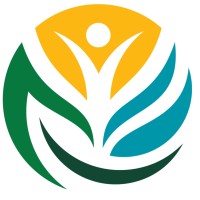Air Pollution from Nearby Traffic and Children's Health: Information for Parents
Spending a lot of time near roads with high traffic can be a potential health hazard. This fact sheet has been prepared by the Office of Environmental Health Hazard Assessment (OEHHA), the California Air Resources Board (ARB), and the California Department of Health Services (DHS) to help parents understand the issues related to traffic pollution and children’s health.
Why is there concern about air pollution from nearby traffic?
Scientists have found that the exhaust from cars, trucks, and buses contains chemicals that can be harmful. Some of these chemicals can cause breathing problems, while others may contribute to risk of cancer.
Some chemicals from vehicle exhaust combine in the air outdoors to form air pollution (such as smog and soot). Air pollution can cause breathing problems and asthma attacks and contributes to risk of heart attacks among people with heart disease.
Recent scientific studies in the US and abroad have found that children living near busy roads may have more asthma symptoms and bronchitis. The Office of Environmental Health Hazard Assessment (OEHHA) completed a health study of school children in Alameda County and found similar results.
It makes sense to reduce your family’s exposures to air pollution from nearby traffic whenever possible.
Where are people exposed to air pollution from traffic?
Traffic emissions are higher in urban areas because of the higher numbers of cars and trucks on the roads. Some of these traffic pollutants may also accumulate in suburban or rural areas because of weather conditions.
We also breathe air with higher levels of traffic pollutants while:
- Driving in heavy traffic, such as on main city streets, highways, and freeways.
- Standing near idling cars, trucks, or buses.
- Spending time at locations near roads with heavy traffic, especially if the location is “downwind” of the road. (“Downwind” means that the wind generally blows from the road towards your location.)
What is being done to decrease children’s exposure to traffic pollution?
The California Air Resources Board is working on many strategies to decrease air pollution from motor vehicles, ranging from cleaner fuels to lower tailpipe emission standards. For more information, see the ARB website listed in “Resources”.
What else can my family and I do to help reduce our exposure to traffic pollution?
Exposure to some level of traffic pollution is unavoidable in most urban and rural settings. However, whether you are at home, driving, or at play, you may be able to make choices that can reduce your exposures.
- Never leave your car idling in the garage. Avoid standing near idling motor vehicles when possible.
- Levels of traffic pollutants can be much lower just one block away from a busy road. When you walk, choose streets with less traffic if possible.
- If you live near a busy road, close windows and doors during peak traffic hours and place the air conditioner setting on “re-circulate”.
- When driving, try not to follow closely behind cars, trucks and buses that have visible smoke rising from the exhaust pipe. You can report them to the California Air Resources Board smoking vehicle hotline at 1-800-END-SMOG.
- Clean air is a goal everyone can work towards. Carpool and use alternative transportation when possible. When you get ready to buy a new car, consider buying one with low exhaust emissions. For additional suggestions, see the ARB website listed in “Resources”.
Does traffic pollution cause children’s asthma symptoms?
Traffic pollution may help trigger an asthma attack. However, it is not yet known whether traffic pollution causes the development or onset of new asthma.
If your child has asthma that is hard to control, talk with a doctor. There are many factors at home and school that can trigger asthma attacks, such as cigarette smoke, dust mites, molds, pollens, and pets. In addition to medicine to help control asthma symptoms, there are many steps you and your child’s school can take to reduce asthma triggers. For what you can do, please see “Resources” below.
What if my child’s school is near a freeway?
If you are concerned about exposure to traffic pollution during school hours, speak to your child’s teacher and principal. OEHHA has prepared an information sheet for schools (see “Resources” below).
A school location near a freeway does not always mean that your child will breathe in higher levels of air pollution. Other important factors affect the level of traffic-related air pollution, including the wind direction, how close the road is to the classroom or recreation area, and the ventilation system. For more details, see our information sheet for schools.
